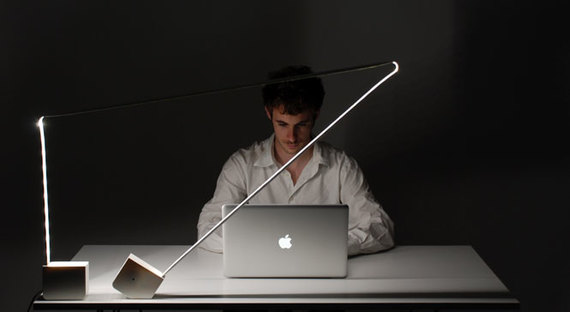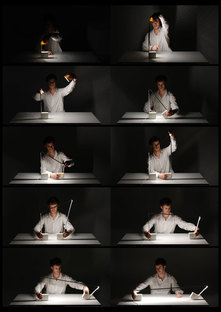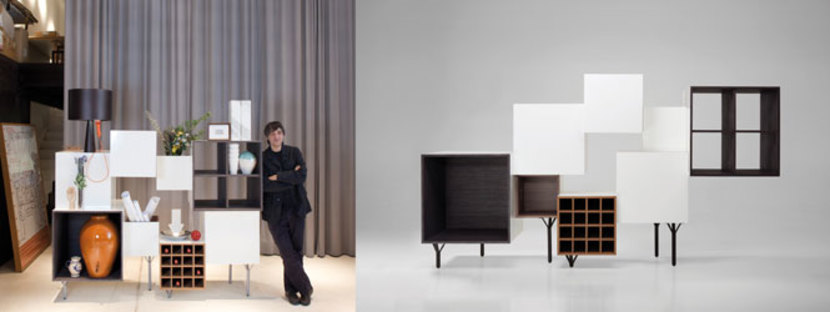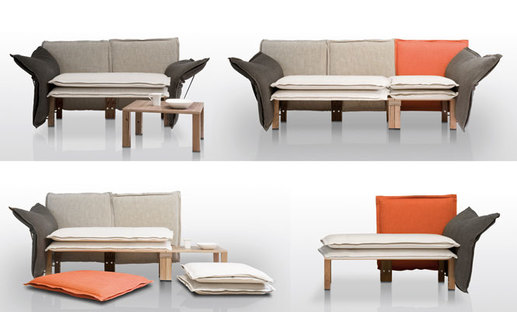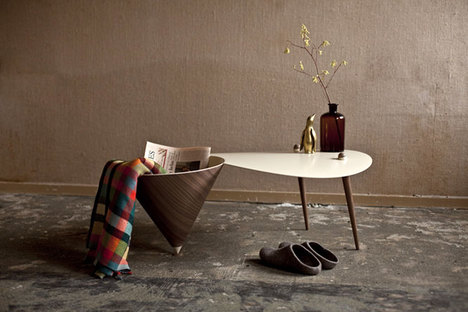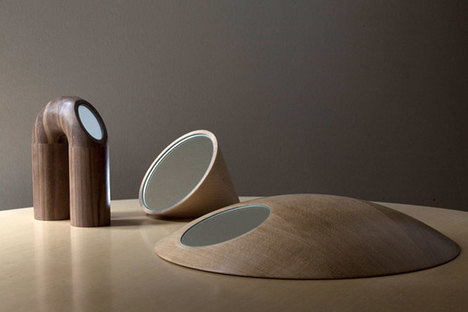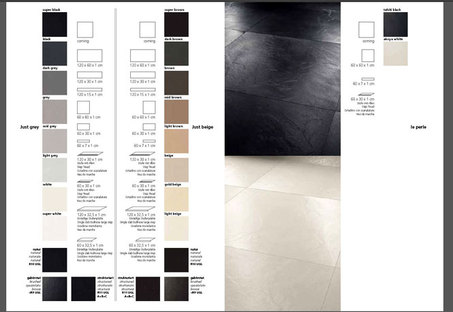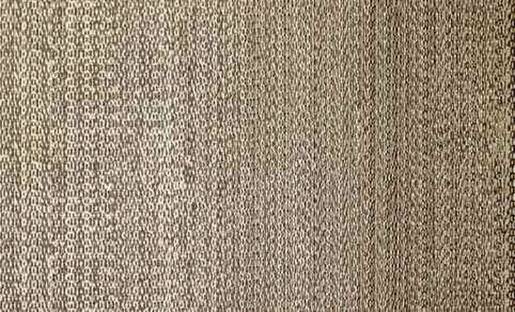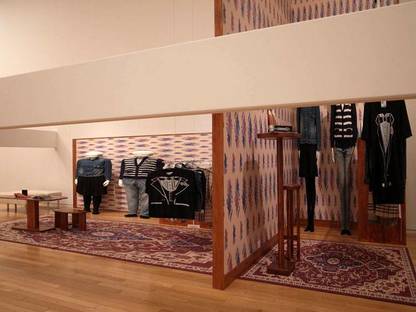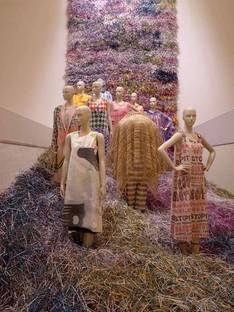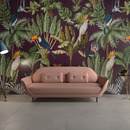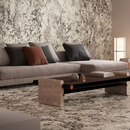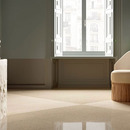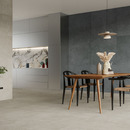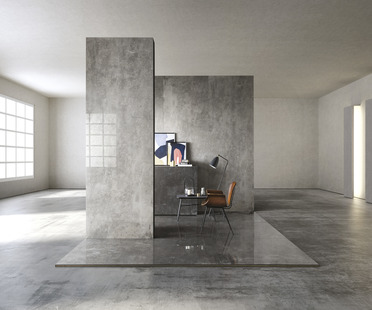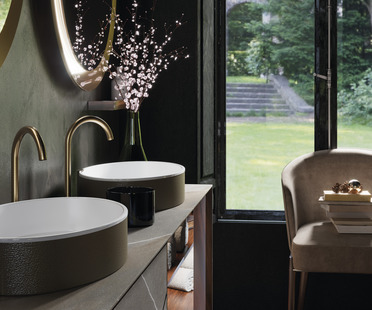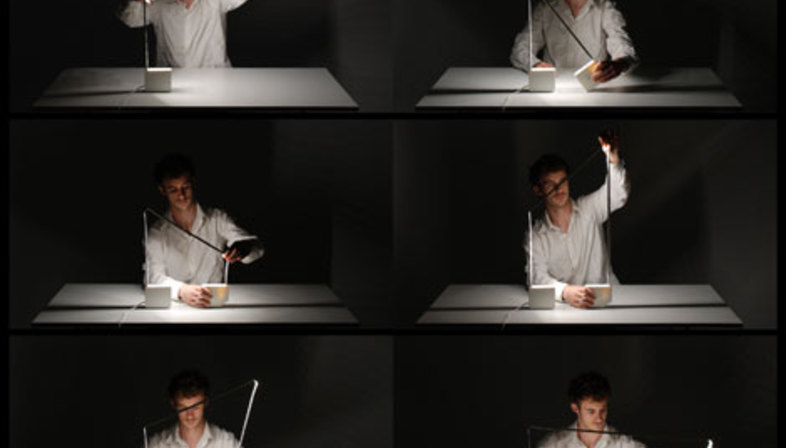
We might define the essence of coexistence, that is, of our relations with others, as flexibility; in the context of designing dwellings, this forces the architect to consider the system made up of objects from different points of view and associate objects with values. In Italy we would call it deregulation: eliminating barriers to promote growth. If every milestone is fluid and every goal is measured in terms of the one beyond it, the state of tranquillity and completeness can be satisfactory only in the short term, requiring new changes as a result of perpetual tension towards motion.
Flexibility as an extension of function lies at the core of Quentin Vaulot’s design for a light fixture that offers complete functionality without ever taking on a final, definite conformation.
This formal indeterminacy also guides the designs of Martì Guixé: Xarxa for Danese approximates the image of a sofa to convey the complex set of possible configurations of the structure and cushions; the Free Port cabinet designed for BD Barcelona is a modular container system with an irregular arrangement that stimulates movement of the objects inside it.
This striving for flexibility is not limited to solving a functional problem, as in the history of modernism, or to deregulating form so that everyone can give objects their own shape, as in postmodernism, but is a vehicle for reflection regarding our changing relationships with things. Things become witnesses to our new way of living, as the tables and chairs in Daphna Laurens’s Cirkel collection seem to declare, for while their form remains the same, they can be used in a variety of different situations; or the scenario set up by Porcelaingres’ Architonia, which uses the image of a city made up of cladding to offer architects a concrete opportunity to choose among the surfaces it designs and produces.
Iris Ceramica’s Tamita Thin line makes a limitation into an opportunity. Existing constructions are not to be dismantled or rejected, but a base on which to build something new in our imaginations: 4.8 mm thick Tamita Thin is simply laid on top of existing floor and wall coverings.
Point of view is an essential aspect of our relationship with the world around us, according to the Feel and Think fashion exhibition which closed recently at the Tokyo Opera City Art Gallery, in which Ryuji Nakamura designed the confines of the areas dedicated to different fashion designers not as walls preventing interaction but as beams at eye level which interrupt our view while allowing us to glimpse what lies beyond.
Mara Corradi
01_Quentin Vaulot, lampada Siu, autoproduzione, 2009
02_Quentin Vaulot, lampada Siu, autoproduzione, 2009
03_Martì Guixé, Free Port cabinet, BD Barcelona, 2011
04_Martì Guixé, Xarxa sofa, Danese, 2010, HYPERLINK "http://www.guixe.com"
05_Daphna Laurens, Cirkel collection, edition for Galerie Gosserez, Paris, 2012, Ph. Mike Roelofs
06_Daphna Laurens, Cirkel collection, edition for Galerie Gosserez, Paris, 2012, Ph. Mike Roelofs
07_Porcelaingres, Architonia, the city of Design, an abstract place which is growing continually and has no geographic boundaries, designed to “receive” professionals in the architectural debate
08_Iris Ceramica, Tamita Thin 4.8 mm thick ultra-light, easy to handle, economical porcelain stoneware floor and wall tiles for laying over existing surfaces
09_Feel and Think: A New Era of Tokyo Fashion, exhibition at the Tokyo Opera City Art Gallery, 2011, Anrealage space
10_Feel and Think: A New Era of Tokyo Fashion, exhibition at the Tokyo Opera City Art Gallery, 2011, Mintdesigns space










